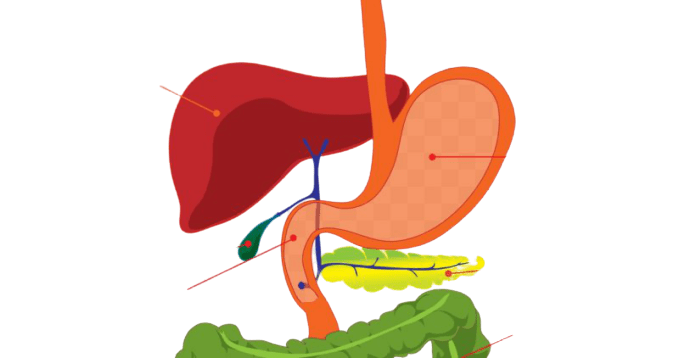Introduction
Ayurveda believes in multiple factors present in our body to maintain health and run our life smoothly. The definition of health according to Ayurveda is as follows – “The balanced state of bodily humors (doshas), digestive fire (agni), body tissues (dhatus) and well formation and excretion of waste materials (mala-kriya) along with the sound state of soul, sense organs and manas. Among these, the digestive fire (agni) has its own importance. In one context, it is said that “agni itself is the body.” It shows how much important this.
Here in this article, you’ll get to know the knowledge about the How to balance the digest element among 5 different elements in our body, how does it work, its types, its different status, its actions, the diseases caused due to poor digestive fire, and the ways to maintain its balance.
Concept of digestive fire
Ayurveda holds a beautiful concept regarding the constitution of our body. It says that – the way in which universe is formed, in the same way our human body is also formed. It is quoted by the verse – “Yad pinde tad brahmaande.” Our body has three bodily humors (doshas) – Vata, Pitta and Kapha. In the same way, the universe is guided by wind, sun and moon. The way in which the wind, sun and moon hold the functions of the outer world, in the same way vata, pitta and kapha hold the functions inside our body.
Sun in the outer world and the pitta inside our body are directly related to our digestive fire. Greater intensity of the sun makes our pitta strong that ultimately increases the digestive element and so with the lesser intensity. As it is said previously that “agni itself is body” so, many of the diseases are originated due to the disturbance in the digestive fire. So, we need to take care of our it in order to remain healthy.
Types
Mainly, there are three types of fire in our body. They are as follows:
- Jatharagni (main digestive fire in the stomach)
- Bhootagni (five for each specific mahabhoota predominant food particle)
- Dhatwaagni (metabolic fire in the cellular level)
Altogether, there are 13 types of fire as Bhootagni are further sub-divided into 5 sub-types and Dhatwagni into further 7 types.
Actions of the digestive fire
- Jatharagni
- It is the main digestive fire present in the stomach and duodenum.
- It helps in the gross digestion of the food particles.
- Bhootagni
- Prithvi agni : metabolise Prithvi / Earth element of food
- Aap agni : metabolise Jala / Water element of food
- Teja agni : metabolise Agni / Fire element of food
- Vaya agni : metabolise Vayu / Air element of food
- Naabhas agni : metabolise Aakash / Space element of food
The main action site of Bhootagni is the liver.
- Dhatwagni
- Rasagni: metabolism of rasa dhatu (body fluids, lymph, etc.)
- Raktagni: metabolism of rakta dhatu (blood, formation of blood cells, etc.)
- Mamsagni: metabolism of mamsa dhatu (muscles)
- Medogni: metabolism of meda dhatu (fat, adipose tissues, eyc.)
- Asthyagni: metabolism of asthi dhatu (bones, cartilages, etc.)
- Majjagni: metabolism of majja dhatu (bone marrow)
- Shukragni: metabolism of shukra dhatu (male and female hormones, sperm, ovum, etc.)
Status of the digestive fire
Naturally, the status of the digestive fire varies according to the time of the day, age, etc.
- to the time of the day:
- high at mid-day (10AM-2PM) and mid-night (10PM-2AM)
- low at morning (6-10AM) and early night (6-10PM)
- variable at early morning (2-6AM) and early evening (2-6PM)
- to the age
- high / normal at young age
- low at child age
- variable at old age
Diseases due to poor digestive fire
Digestive fire mainly deals with the Jatharagni. It has four main conditions:
- Mandagni: poor digestive fire
- Teekshnagni: very high
- Vishamagni: variable
- Samagni: balanced
Diseases associated with different conditions of the digestive insufficiency are:
| Condition | Diseases |
| Mandagni / Poor | Anorexia, loss of taste sensation, drowsiness, fever, indigestion, tumor, lymphodema, obesity, hypothyroidism, loss of libido, etc. |
| Teekshnagni / Very high | Skin diseases, haemorrhage, inflammation, UTI, etc. |
| Vishamagni / Variable | Osteoarthritis, rheumatoid arthritis, sciatica, neural diseases, etc. |
How to balance digestive fire
Imbalanced digestive fire is the root cause for every disease. So, it is the most important to maintain a balanced state of it.
The principal of maintaining digestive fire:
| Condition | What to do | How to do |
| Mandagni / Poor | Increase agni
| Intake of pungent, sour and salty tastes food. Bitter taste in small amount before meals. Ginger, black pepper, long pepper, cinnamom, Cyperus rotundas. Take bath every morning. Physical exercises. Eat light meals. |
| Teekshagni / Very high digestive fire | Lower the agni
| Intake of sweet, bitter and astringent tastes food. Eat heavy meals. Eat light meals at low intervals. Intake of adequate amount of water. |
| Vishamagni / Variable | Balance the agni | Uniform routine to take meals. Intake of rock salt, asafoetida, cumin seeds. Intake of luke warm water. Intake of garlic every morning in the empty stomach. |
| Samagni / Balanced | Maintain the balance | Maintain the daily routine. Intake of coriander, turmeric. |
